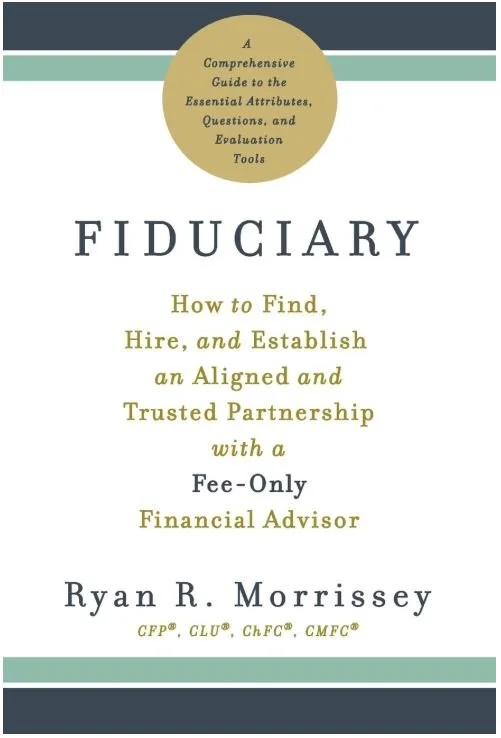ACA Health Insurance Subsidies: What Retirees Need to Know About the 2026 Change
If you’re currently receiving an Affordable Care Act (ACA) health insurance subsidy, there are important changes coming in 2026 that could impact your retirement healthcare costs. Understanding how these subsidies work today, how they’re changing, and what strategies you can use to prepare could help you save thousands of dollars in premiums during the critical years before Medicare eligibility at age 65.
In this article, we’ll cover:
How ACA subsidies currently work
Who is eligible and how income is calculated
What changes are scheduled to occur in 2026
Strategies retirees can use to preserve subsidy eligibility
Why ACA Subsidies Matter for Retirees
One of the biggest financial concerns for retirees under age 65 is the high cost of health insurance. Monthly premiums can be thousands of dollars, not including deductibles and out-of-pocket expenses.
Since its passage, the Affordable Care Act (ACA)—also known as Obamacare—has helped retirees and families access more affordable healthcare through premium tax credits (subsidies). These subsidies adjust based on income and help shield retirees from the full impact of rising insurance premiums.
In fact, according to the Centers for Medicare & Medicaid Services, 91% of the 21 million people enrolled in ACA marketplace plans in 2024 received some form of subsidy.
But these generous subsidies are set to change in 2026.
How ACA Subsidies Work Today
ACA subsidies are based on your modified adjusted gross income (MAGI) compared to the Federal Poverty Level (FPL), which varies depending on household size.
Currently, thanks to the American Rescue Plan Act (ARPA) of 2021, subsidies are more generous and extend beyond the original 400% of FPL limit. This means more middle-income retirees have been able to qualify.
For example, under current rules:
Premiums for ACA marketplace Silver Plans are capped at 8.5% of income.
Even individuals earning above 400% of FPL may still qualify for subsidies.
Many retirees pay dramatically reduced premiums compared to pre-ARPA rules.
These expanded subsidies are set to expire at the end of 2025.
What Happens in 2026?
Starting in 2026, ACA subsidies are scheduled to revert back to pre-ARPA rules unless Congress takes further action.
Here’s what that means:
Subsidy Cliff Returns – Instead of gradually phasing out, subsidies will cut off abruptly at 400% of FPL. Earning just $1 over the threshold could result in losing your subsidy entirely.
Higher Premiums – Without subsidies, many retirees could see their monthly premiums increase from a few hundred dollars to $2,500–$3,000 or more per couple.
Insurer Adjustments – Carriers already anticipate healthier individuals dropping coverage due to higher costs, which could push premiums up another 15–30% in 2026.
For a married couple, the cutoff will be around $84,600 of income in 2026 (based on current FPL adjustments). That’s a modest threshold for many retirees planning their retirement income.
A comprehensive guide to the essential attributes, questions, and evaluation tools for fostering a trusted partnership with a financial advisor.
Key Eligibility Factors
To qualify for ACA subsidies, you must:
Be a U.S. citizen or legal resident
Live in the U.S.
Not be incarcerated
Have income between 100%–400% of the Federal Poverty Level (unless Congress extends ARPA’s expanded subsidies)
It’s important to note: eligibility is based on income, not assets. Retirees with substantial retirement savings may still qualify if they manage their taxable income carefully.
Strategies to Preserve Subsidy Eligibility
With subsidies tightening in 2026, retirees should start planning now. Here are some strategies to help keep income under the threshold:
1. Manage Withdrawals
Take extra IRA or 401(k) distributions in 2025 before rules change.
Use those funds to build a cash reserve you can live off in 2026–2027 without generating taxable income.
2. Use Roth Accounts
Withdrawals from Roth IRAs or Roth 401(k)s (if qualified) do not count as taxable income and won’t affect subsidy eligibility.
3. Consider Non-Taxable Income Sources
Home Equity Line of Credit (HELOC) can provide cash flow without raising MAGI. While this may not be the most optimal option, as you will incur interest on the money borrowed. This does provide a way to access the equity in your home while maintaining lower income levels to retain your ACA subsidy.
Once you are no longer eligible for subsidy (i.e. you’ve reached the age of 65 and enroll in Medicare), you can take larger retirement account distributions to pay off the balance of your HELOC.
4. Leverage Tax-Advantaged Accounts
If still working, maximize pre-tax 401(k), IRA, or HSA contributions to reduce taxable income.
5. Time Capital Gains & Property Sales
Consider realizing gains in 2025 before the subsidy cliff returns.
Avoid large taxable events in 2026 if possible.
6. Work With a Financial Advisor
Small income missteps could cost thousands in lost subsidies. A coordinated tax and retirement income plan is essential.
Open Enrollment and Next Steps
The ACA Open Enrollment Period runs from November 1 to January 15 each year. Outside of this window, you’ll need a qualifying life event (marriage, divorce, move, job loss, etc.) to make changes.
If you’re planning to retire before Medicare eligibility, it’s critical to:
Review your income strategy for 2025–2026.
Monitor updates from Congress on potential subsidy extensions.
Revisit your plan during Open Enrollment in November 2025 to see updated subsidy numbers.
Prefer to listen to this information?
Click below to check out my full video on YouTube
Final Thoughts
Healthcare is one of the largest expenses for retirees, and ACA subsidies have made coverage more affordable for millions. But with changes coming in 2026, retirees need to carefully plan their income strategy to avoid losing these valuable benefits.
At Morrissey Wealth Management, we help retirees create tax-smart withdrawal strategies to balance income needs with subsidy eligibility. If you’d like a personalized review of your retirement income and healthcare options, contact us today to schedule a consultation.
If you have a question or topic that you’d like to have considered for a future episode/blog post, you can request it by going to www.retirewithryan.com and clicking on ask a question.
As always, have a great day, a better week, and I look forward to talking with you on the next blog post, podcast, YouTube video, or wherever we have the pleasure of connecting!
Written by Ryan Morrissey
President & Principle Wealth Advisor of Morrissey Wealth Management
Host of the Retire with Ryan Podcast


